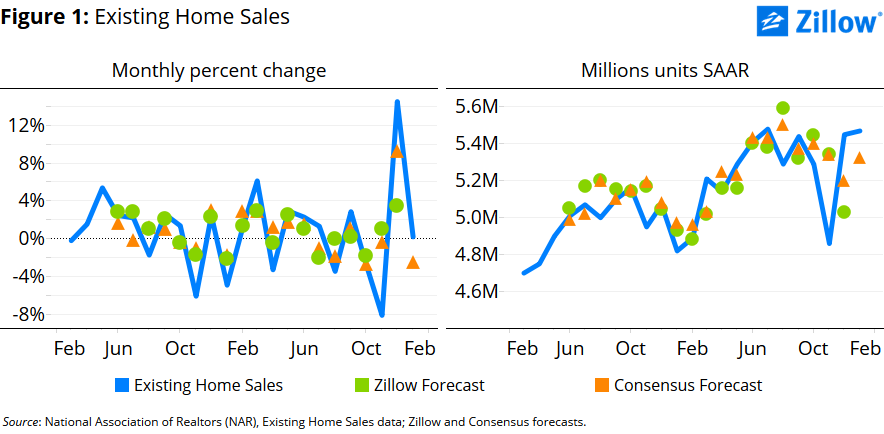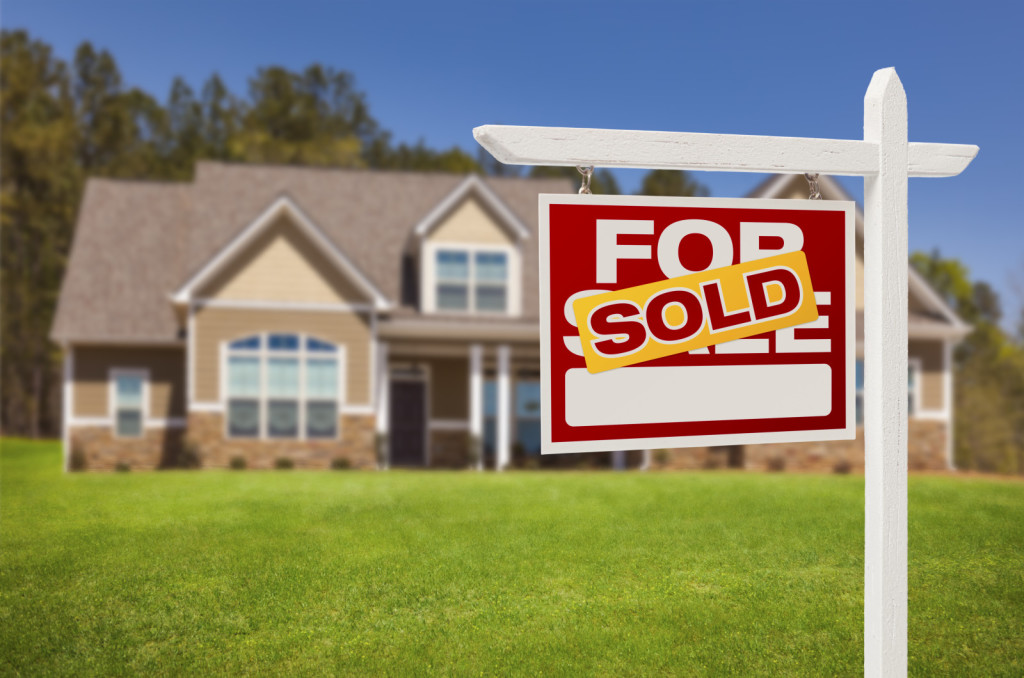Uncategorized
Key Takeaways From the January Existing Home Sales Report
January existing home sales edged up 0.4 percent from December to 5.47 million units at a seasonally adjusted annual rate (SAAR), and hit a new price high in the month, according to the National Association of Realtors (figure 1). December sales were revised slightly downward to 5.45 million units (SAAR) from 5.46 million units (SAAR).
- Existing home sales edged higher in January, increasing 0.4 percent from December to 5.47 million units at a seasonally adjusted annual rate (SAAR).
- The median price of all existing homes sold in January reached a new all-time high of $230,900, up 1.5 from December and surpassing the pre-crisis peak of $230,600 recorded in October 2005.
- Home sales increased 11 percent over the year, but annual growth could stall by mid-year unless sales are very strong in the months ahead.
January existing home sales edged up 0.4 percent from December to 5.47 million units at a seasonally adjusted annual rate (SAAR), and hit a new price high in the month, according to the National Association of Realtors (figure 1). December sales were revised slightly downward to 5.45 million units (SAAR) from 5.46 million units (SAAR).
 The median price of all existing homes sold in January reached a new all-time high of $230,900, up 1.5 from December and surpassing the pre-crisis peak of $230,600 recorded in October 2005. The median price of existing single-family homes sold reached $233,100, up 1.6 percent from the pre-crisis peak. At $219,700, the median price of condos sold in January remained 6.1 percent below peak.
The median price of all existing homes sold in January reached a new all-time high of $230,900, up 1.5 from December and surpassing the pre-crisis peak of $230,600 recorded in October 2005. The median price of existing single-family homes sold reached $233,100, up 1.6 percent from the pre-crisis peak. At $219,700, the median price of condos sold in January remained 6.1 percent below peak.
Over the year, existing home sales are up 11 percent. However, all of this annualized growth occurred during the first half of 2015 (recent market hiccups around regulatory changes aside). Existing home sales were roughly flat during the second half of 2015 and into the first month of 2016. Moreover, comparing January 2015 to January 2016 is particularly difficult because widespread severe winter weather held down home sales during January and February 2015. Unless sales pick up strongly in coming months, the annual pace of growth of home sales will likely fall to near zero by mid-year.
January existing home sales picked up in the Northeast and Midwest, were flat in South and declined in the West. The South and West historically account for much larger shares of existing home sales, and their weakness weighed on the aggregate national numbers.

